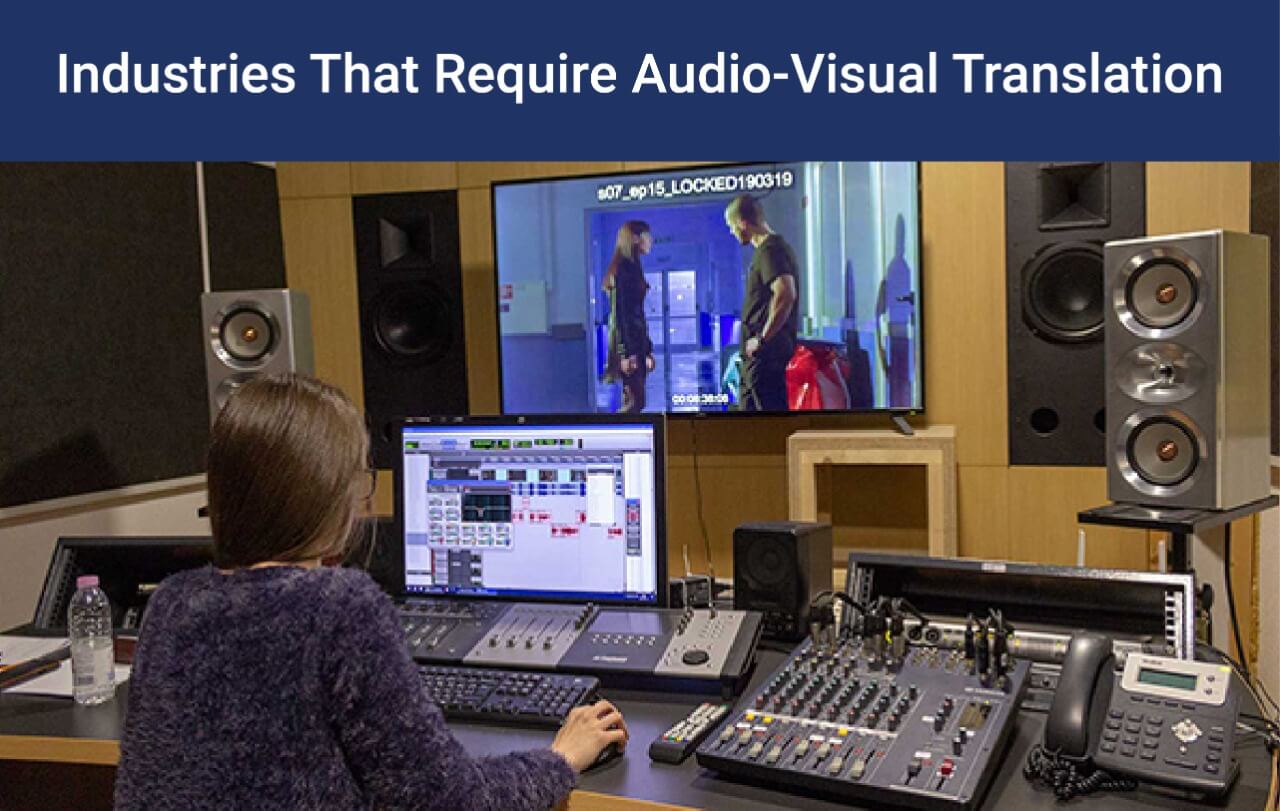
A new study conducted for over 10,000 people across 5 countries has revealed a startling fact - the average daily time spent consuming content is a whopping 6 hours and 59 minutes!
This includes digital media across different platforms, including television and smartphones.
With this amount of digital information consumed regularly, it is easy to identify the importance of audio-visual translation.
Most of the content consumed worldwide is provided in an AV format. Examples include platforms such as YouTube and Netflix. This is where audio-visual translation comes into play.
Audio-visual translation (AVT) describes the transfer of information from one language to another through audiovisual media. Given that audio and visual material is often consumed simultaneously, AVT is different from a simple print translation.
For example, when a film is ‘dubbed’, the soundtrack, visuals, and background noises largely remain the same. The only difference is in translating spoken content to another language, which is then visually adapted to gestures and lip movements.
Creating audio and video content is one of the best ways to reach your target audience. AVT is an essential contributor towards promotion strategies that are crisp, precise, and enable audience comprehension.
Audio-visual translation is an excellent option for the following reasons:
Research reveals that adding subtitles and transcripts to video content is a great way to boost the SEO ranking of video. This is primarily because the search engines register the text material that is a part of video.
With the right translation services, it becomes easier to provide your audience with access to different kinds of audio and visual material. Choosing the most comfortable resource can significantly enhance customer experience.
Translation of audio content to a visual format is a great way to increase rate of comprehension among the audience. This is especially true for industries described in the next section.
Several industries, employ Audio-visual translation services
The two most popular kinds of audio-visual translation are:
These services are employed across the different industries mentioned above to translate audio-visual media into a preferred language accurately.
One of the critical challenges faced by industries employing AVT services is conveying cultural norms and tradition.
For example, visual content on the screen automatically helps you understand the associated cultural norms in the entertainment industry.
This is often conveyed through facial expressions, gestures, interior decoration, and even clothes! With audio-visual translation, on the other hand, a foreign audience can hear or read content in their language. However, there is a mismatch between the original visual elements of the content and the translation language.
Localization is a key factor that ensures audio-visual translation is done as correctly and precisely as possible. Localizing means modifying an audio-visual element for a target audience by considering any local cultural factors.
For example, the translation of different words and proverbscan raise difficulties. They are primarily culture-specific and may even be directly related to a previous concept. Linguistic meaning can also vary with social and historical lenses.
In these cases, linguistic and cultural knowledge of the source language is crucial to achieving the best solution in a target language.
At Language Services Bureau, we are specialized in the different aspects of audio-visual translation service. Our dedicated professionals have several years of experience to provide a cost-effective and high-quality translation!
Click here to learn more about our services!
For any queries related to language translation services. Inquire at our email address below or give us a call today!
info@languageservicesbureau.com
Telephone: +91-20-24470509, +91-82370 60559
Similar articles for you...

आमच्या गेल्या महिन्यातील ब्लॉग मध्ये भाषांचे ज्ञान आवश्यक असणाऱ्या करियर क्षेत्रांची माहिती आपल्याला मिळाली. जिथे भाषेचे ज्ञान फायद्याचे ठरते असे इतर व्यवसाय आपण या महिन्यात पाहुयात.

Posted by : Language Services Bureau

The time it takes to learn a language depends on what you want to do with it– here is a great article about language learning and the kind of expectations you can set about the time required for the same!